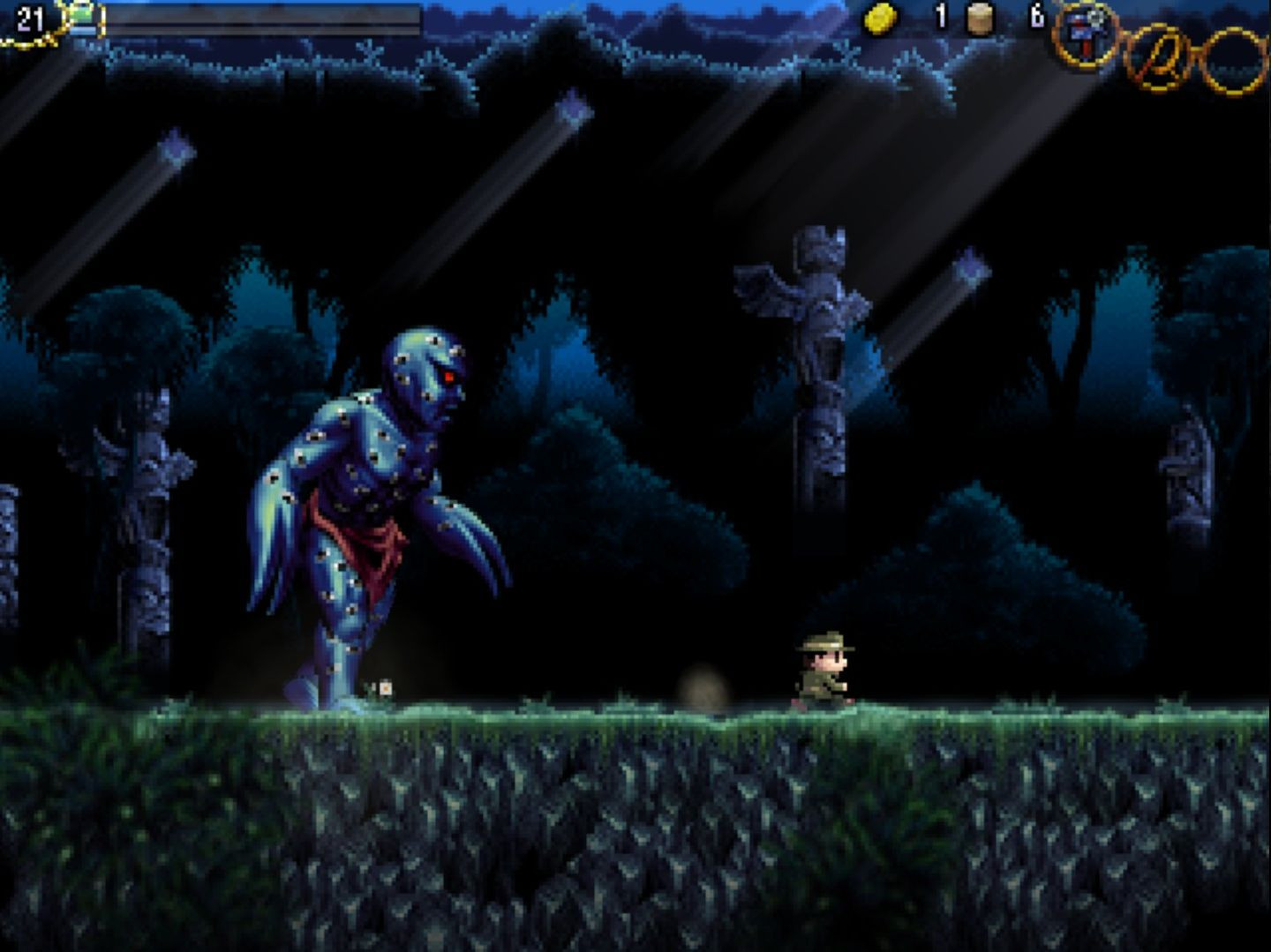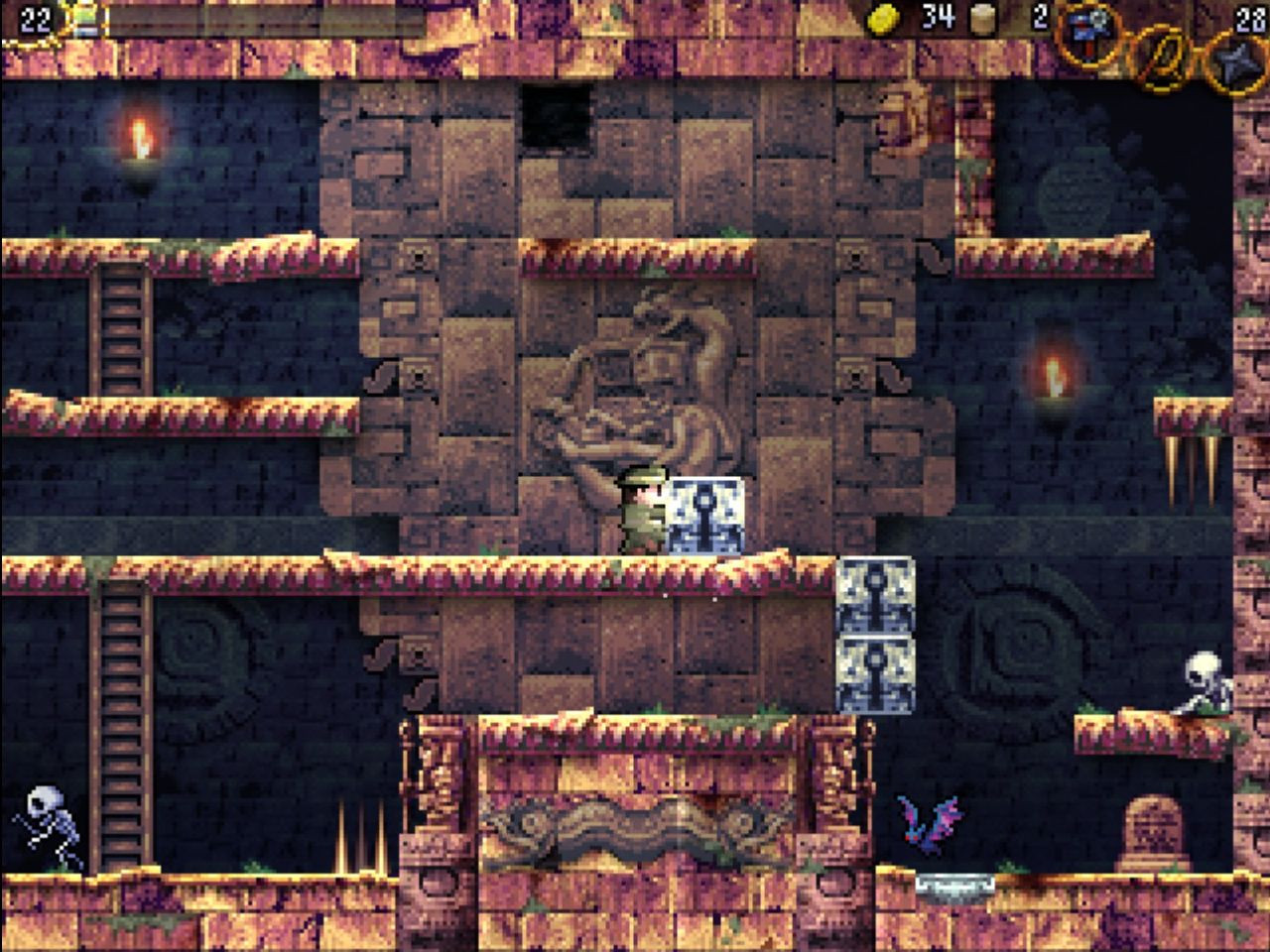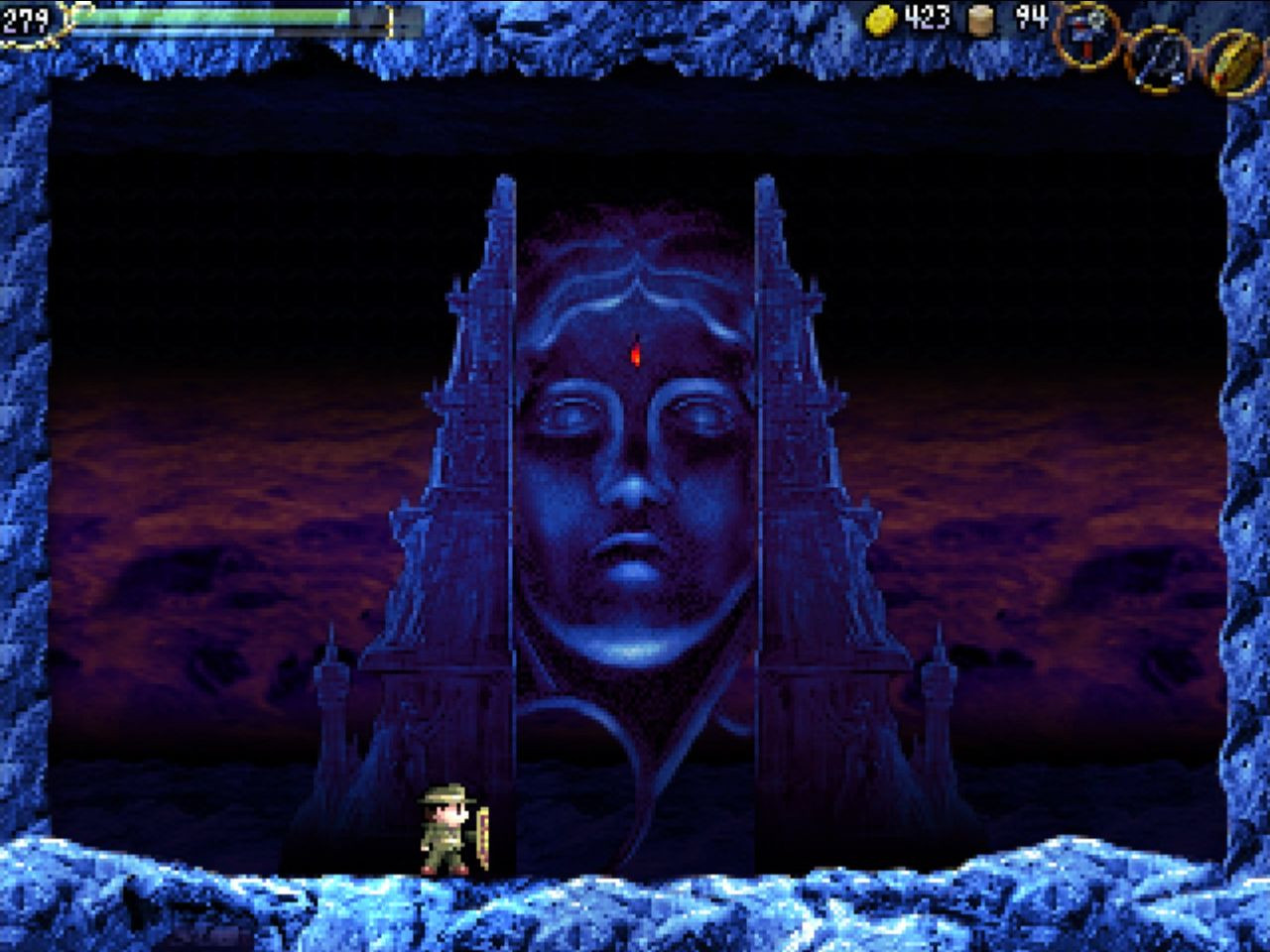
About SqncBrk
Sequence break is the act of obtaining an item out of order or performing certain action out of order. In…

In two words: hard and japanese. Perhaps, that wasn’t eloquent enough. Excruciatingly, unbelievably hard and amusingly delightfully japanese. And if you think it’s “Dark Souls hard”, think again. La-Mulana does to Dark Souls what Dark Souls does to your typical AAA-game. It is an impossible cocktail, where a tiny drop of pleasure is dissolved in a full glass of pain. So you have to work your way to your reward and it will be more of a faint tone than a full-scale experience. But it’s still worth it. Even though you’ll have to deal with those impossible wall-jumps and remorseless bosses, and complete vagueness of the right direction to go. Such outright brutality is so old-school that the game becomes not just an homage to The Maze of Galious like UnEpic did, but a proper successor.

This uncompromisingly torturing game-design is a perfect match for an originally freeware game for Windows, made by two enthusiasts inspired by MSX era in gaming. It’s that level of difficulty that accepts a placing of an unkillable (until you find a certain item of course) boss just a few screens to the left from the starting point. But then again what would you expect from a game that tries to recreate an atmosphere of obscure predecessor of modern metroidvanias? If you think now that La-Mulana has a suitably absurd fantasy story, you’re only half right. It still has its background, one of a very grim mythology, but on the surface it’s the story of an archaeologist named Lemeza Kosugi. He’s wearing a fedora, carrying a whip and a revolver and is going inside a prehistoric underground tomb. Of course inside the tomb he will find all sorts of dangers, including venomous snakes, aggressive bats, walking skeletons and all kinds of deadly traps. So, yes, it’s Indiana Jones, but with some additional weirdness. The deeper you venture inside game’s vast dungeon the more horrible truths you will discover about the world’s history and (seemingly) inevitable doom. This doesn’t mean though that there won’t be a whole bunch of comical stereotypic japanese
About how the dungeoneering is made I must say that it looks fairly simple on the surface. You can move in four directions, jump like someone recovering from a car incident and whip those nasty snakes and bats ‘till they die and (hopefully) drop some gold coins. Then there’s the inventory screen with lots of frightening empty space. And a special tab for software management of your notebook. No, not that real one, but an in-game one, which Kosugi uses in his adventures. There’s lots of different software throughout the game that you will pick up in dark corners, but only few may be active at a time, because Mobile Super X has only 1 gigabyte of storage. Player has to choose from such stuff as map display, email client for receiving messages from certain NPC or even decrypt ancient glyphs. To make things even worse, there are 12 program combinations with extra properties like additional invincibility frames after receiving damage. And believe me, you’ll want those frames by the time you’ll get both so-important apps.

Actually you’ll want anything that’ll help even a bit. Oh, those precious bullets for your gun, that almighty destroyer of bosses, they’ll cost a pretty penny, but are so worth it. So, you’ll save and collect, get better weapons, protective items, learn better tricks. And every bit will seem so tiny and insignificant, but in the end you’ll face the hardest challenges and overcome them. And that will be rewarding. La-Mulana isn’t something I would recommend to a stranger. It’s easy to overlook the game’s virtues, especially when learning curve is rather steep. Nonetheless it’s a masterpiece on its own merits. Engaging story, gloomy setting, stupendous world and painstakingly hard puzzles make a combination so monolithic and grandiose, that I just have no other choice but admire it.